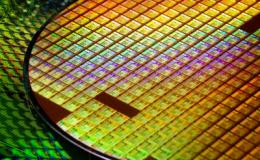
Research Topics
The field of Materials Science & Engineering is evolving dramatically as we enter the 21st Century. What began as the study of metals and ceramics in the 1960s has broadened in recent years to include semiconductors and soft materials. With this evolution and broadening of the discipline, current research projects span multiple materials classes and build on expertise in many different fields. As a result, current research in Materials Science and Engineering is increasingly defined by materials systems rather than materials classes.
At Cornell, the Department of Materials Science & Engineering (MS&E) has adopted this new systems-based vision of the field by defining four strategic areas which are considered to be critical for today’s emerging research. The four strategic research areas are Energy Production and Storage, Electronics and Photonics, Bioinspired Materials and Systems, and Green Technologies.
Materials Science & Engineering is an exciting and vibrant interdisciplinary research field. Cornell MS&E draws upon its world-class faculty, innovative researchers, state-of-the-art facilities and highly collaborative research environment to respond to challenging technological and societal demands both in the present and the future.

Energy Production and Storage
Energy research will prove to be the most prosperous growth area for the department, the College and the University. The inevitability of an energy crisis and global climate change has intensified efforts in alternative energy research around the world. The excitement building around this sector is reminiscent of the early years of the information technology revolution. Among the many possible sources of alternative energy, the following areas are particularly aligned with the current materials research at Cornell as they play to our existing strengths: photocatalysis, photovoltaics, thermoelectrics, phononics, batteries and supercapacitors.
Relevant Research Areas:

Electronics & Photonics
The use of semiconductor devices and circuits will continue to play a major role in modern life. Therefore electronics and photonics are considered premier growth areas. As feature sizes decrease, incremental research based on current methods and materials is unlikely to enable Moore's Law to continue. New materials and processing techniques are needed. Advances in nanoscale fabrication have led to recent advances in this field. We have targeted the following areas: oxide semiconductors, 3D integration, materials beyond silicon, high K and low K dielectrics, plasmonics, spintronics, and multiferroics.
Relevant Research Areas:

Bioinspired Materials and Systems
Scientists and engineers are increasingly turning to nature for inspiration. The solutions arrived at by natural selection are often a good starting point in the search for answers to scientific and technical problems. Designing and building bioinspired devices or systems can tell us more about the original animal or plant model. The following areas are particularly aligned with the current materials research at Cornell: bioinspired composites, engineered protein films for adhesion, lubrication and sensing applications, molecular tools for in-vitro and in-vivo imaging (C-Dots, FRET), as well as biomaterials for tissue engineering and drug delivery.
Relevant Research Areas:

Green Technologies
The 21st century has been called the "century of the environment." Neither governments nor individual citizens can any longer assume that social challenges such as pollution, dwindling natural resources and climate change can be set aside for future generations. Strategies for clean and sustainable communities need to be established now, community by community. A dawning era of creativity and innovation in "green technology" (also known as "clean technology") is bringing the promise of a healthier planet (as well as the prospect of growing businesses) that can sustain its health. We have targeted green composites and new systems for CO2 capture and conversion as areas of future growth.

